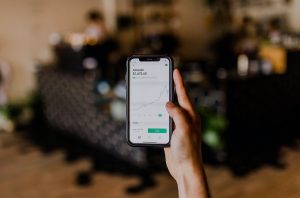Forex trading is an exciting market that offers traders endless opportunities to make profits. However, it can be quite challenging to know when to enter or exit a trade. This is where stop and limit orders come in handy. These orders are essential tools for managing risk and ensuring that traders don’t lose all their money in a single trade.
A stop order is an instruction to buy or sell a currency pair once its price reaches a certain level. It is used to limit losses in a trade. For example, if a trader buys a currency pair at $1.2000 and sets a stop loss at $1.1900, the trade will automatically close when the price falls to $1.1900. This means that the trader will only lose $100, which is the difference between the entry price and the stop loss price.
On the other hand, a limit order is an instruction to buy or sell a currency pair at a specific price or better. It is used to take profits in a trade. For example, if a trader buys a currency pair at $1.2000 and sets a take profit at $1.2100, the trade will automatically close when the price reaches $1.2100. This means that the trader will make a profit of $100, which is the difference between the entry price and the take profit price.
To stop or limit orders in Forex, traders need to follow these steps:
Step 1: Open a trading platform
Traders need to open a trading platform provided by their broker. The trading platform should have a section for stop and limit orders. The platform should also allow traders to set the stop and limit orders before entering a trade.
Step 2: Choose the currency pair to trade
Traders need to choose the currency pair they want to trade. They should analyze the market and determine whether the market is trending or ranging. This will help them to decide whether to use a stop order, a limit order, or both.
Step 3: Set the stop order
Traders need to set the stop order to limit their losses. They should determine the price at which they want to close the trade if the market moves against them. They should also set the stop order according to the volatility of the currency pair they are trading. For example, if the currency pair is highly volatile, traders should set a wider stop loss to avoid being stopped out prematurely.
Step 4: Set the limit order
Traders need to set the limit order to take profits. They should determine the price at which they want to close the trade if the market moves in their favor. They should also set the limit order based on the risk-reward ratio. For example, if the risk-reward ratio is 1:2, they should set the limit order to twice the distance of the stop loss.
Step 5: Enter the trade
Traders need to enter the trade once they have set the stop and limit orders. They should ensure that the stop and limit orders are placed before entering the trade. They should also ensure that the order sizes are appropriate for their account size and risk tolerance.
Step 6: Monitor the trade
Traders need to monitor the trade to ensure that the stop and limit orders are working as expected. They should also adjust the stop and limit orders if the market conditions change. For example, if the market is highly volatile, they may need to widen the stop loss to avoid being stopped out prematurely.
In conclusion, stop and limit orders are essential tools for managing risk and ensuring that traders don’t lose all their money in a single trade. Traders should use them to limit their losses and take profits in a trade. They should also ensure that the orders are placed before entering the trade and that the order sizes are appropriate for their account size and risk tolerance. By following these steps, traders can stop or limit orders in Forex and improve their chances of success.






